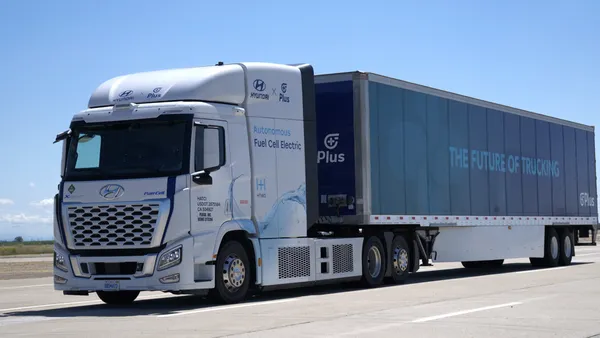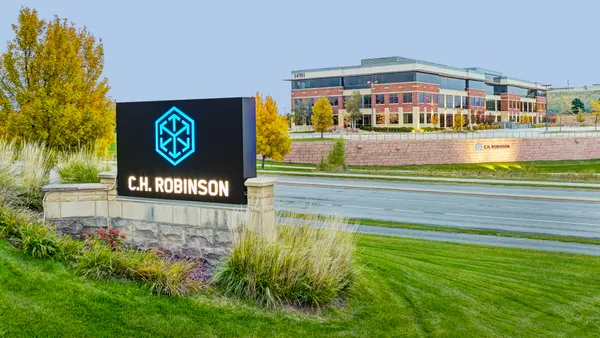As the pandemic continues to throw wrenches into day-to-day operations, fleets are rolling with the punches. The scenario is ever evolving, but key to managing efficiently is optimizing route planning. Most companies can achieve this with the right tools and strategies.
“To say this has been a challenge is the understatement of the year,” Tom Regan, VP of dedicated transportation solutions at Ryder, told Transport Dive. “The pandemic has touched every aspect of our operations. It was business as usual on a Monday, and an entirely different matrix on a Tuesday.”
The first few weeks of adjusting to the new conditions posed challenges to route planning in a variety of ways. “We saw some abrupt customer closings due to the diagnosis of COVID-19 within the customers’ facilities,” Amos Rogan, LTL operations leader at Averitt Express, told Transport Dive. “We also saw shipments that were tendered to us going to locations that were closed.”
Facilities that remained open faced other challenges, especially related to demand surges. “Panic buying led to unnatural inventory changes and patterns for many of our customers,” said Regan. “Some customers had to double capacity literally in one day. DCs struggled to keep up.”
“The pandemic has touched every aspect of our operations. It was business as usual on a Monday, and an entirely different matrix on a Tuesday.”

Tom Regan
VP of Dedicated Transportation Solutions, Ryder
On the flip side, Regan said, there were extreme plunges. “We have customers who just fell off a cliff,” he explained. “Or customers who were open in one state and closed in another.”
For trucking, this has amounted to quick pivots and adjusting route planning on the fly.
At Ryder, Regan said, turning to the holiday playbook has been helpful. “We always have to adjust to surges at the holidays, so we could at least rely on that muscle memory in route planning,” he said.
Leaning on software in the new normal
“The difference between pre-[COVID-19] and current is that we are looking to utilize our tools to more dynamically route shipments and be more creative in how we plan versus some level of static routing,” said Rogan.
Satish Jindel, president of SJ Consulting Group and ShipMatrix, said this is where route planning software can step in to optimize routes and eliminate gaps in productivity that might emerge. The software “can tackle changes in volume, delivery windows, locations and pricing, all of which are an ongoing issue right now.” he told Transport Dive.
Averitt Express uses Roadnet to ensure proper sequencing of its shipments. “We’ve had to adjust start times and consolidate routes as customers have altered their business hours,” said Rogan. “But with this in place and less traffic on the roads, we’ve been able to get to our customers earlier and improve our KPIs, substantially controlling our costs.”
Trucking companies have used their software to overcome high demand one day and potentially idle trucks the next. The tools have balanced the equipment ratio to match.
At Ryder, customers with surges in volume have worked with the company to widen their pick-up and delivery windows. “For those who have reduced demand, the delivery hours are now more limited,” said Dallas Plattsmier, manager of supply chain engineering at Ryder. “So, we’ve had to add more trucks and drivers to handle the volatility.”
When it comes to optimized routing, Jindel pointed to software for helping with the addition and loss of customers. “Drivers may have been used to going to one address that no longer exists and now need to find new addresses,” he said. “The software can ensure they are not losing time by finding the most efficient new routing.”
“We always have to adjust to surges at the holidays, so we could at least rely on that muscle memory in route planning.”

Tom Regan
VP of Dedicated Transportation Solutions, Ryder
Ryder also had to address the matter of ensuring its drivers could find food, showers and bathrooms on the road. “For a while, Pennsylvania’s restaurants were entirely shut down,” said Regan. “We have an app to communicate with the drivers to help them find these necessities.”
As things settle down to an extent — no more “grenades going off,” as Regan put it — trucking companies have an opportunity to close up gaps in optimization. “As I look back on the past couple of months, I realize that part of planning is constant variability,” he said. ”[COVID-19] has accelerated that in a very big way — dynamic routing is the new norm.”











